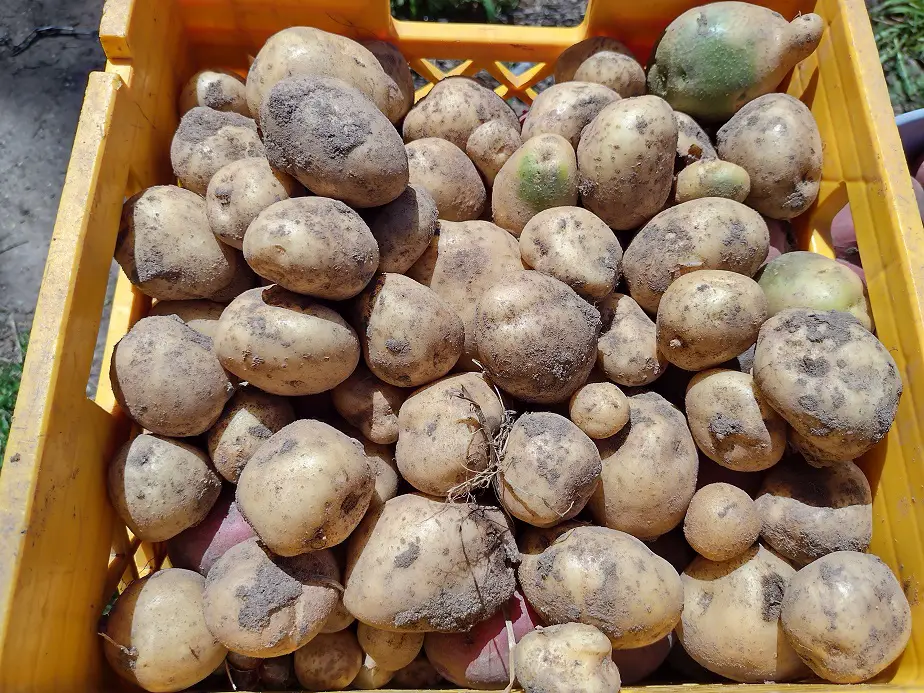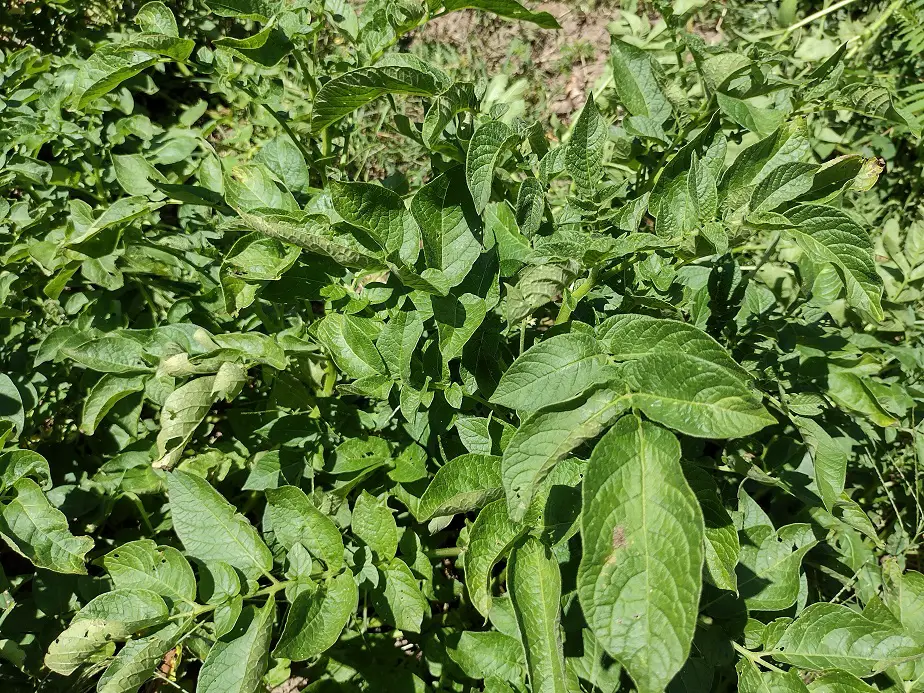We grow potatoes in Michigan and face frost in the early season as well as the fall, but still, get a great harvest every year.
Young potato plants can handle a spring freeze or frost, but a fall frost will usually kill off unprotected potato plants. Plan your growing season around the first and last frost dates for your area. In the fall, take precautionary measures to protect plants from an incoming freeze or frost.
Potatoes are cold-hardy but sometimes need some help. Here’s how I handle the cold with my potatoes.
Saving Potatoes From Spring Frost
Any part of a potato plant that freezes will die. A light frost usually damages the edges of the leaves, and a heavy frost can kill the stems. A good freeze will kill off every part of the plant above ground and if the ground freezes, the potatoes will be wrecked.
Early spring is usually the most common time to get frosted potato plants. That’s not so bad. The plants are quite young and in the fast-growing stage. They’ll rebound pretty quickly. I had 6-inch tall plants that froze a few years ago. They were damaged but were able to keep growing.
If plants get damaged, even if they overcome it, the harvest will suffer. The most common way to deal with a spring frost is with blankets. My mother used to run out and lay sheets and blankets over her plants before a frost, and that does help. It insulates them a bit, keeping the cold night air out.
Plastic sheeting and tarps are also used. If you’re a more serious grower, you might call it a row cover. this usually works well enough for a basic frost in a small garden. In a larger operation, burn barrels or haybales soaked in engine oil are sometimes lit for overnight heat. That’s more serious though.
If you are expecting a good freeze, as in more than 5 degrees below freezing, I recommend burying the plants. Burying them in straw, hay, or fallen leaves acts as a natural insulator and keeps the cold out. make sure the top of the plant is covered by a few inches of material.
You can still use a cover over them. Two levels of frost prevention go pretty well together if things get serious. That’s about the best you can do to prevent damage from a spring frost.
Fall frosts aren’t so easy to deal with. First of all, the plants are about done growing, so they won’t rebound well. You could cover the mature plants with blankets, but burying them in straw would take too much material. A fall frost is usually considered the end of the road for potatoes.
At that point, the weather is getting colder, the sub weaker, and plants are growing slower. A fall frost is generally the end of the season for potatoes if they aren’t fully mature already.

Planting Potatoes Around the Frosts
Planting potatoes early is rarely a concern. The soil temperature required for the seed potato to emerge usually means the threat of a hard freeze is past. In cool spring weather, it takes around 4 weeks for the sprouts to emerge. Soil temperature of about 45 degrees usually sprouts the seed potatoes.
If they’re planted before that, they will just hang around until the soil warms up a bit. They can still get a frost, but probably not a killing freeze. Summer plantings for a fall harvest take a little more thinking. Older plants will not come back after frost.
Potatoes reach full maturity between 90 and 120 days after planting, in good weather. You need to know the approximate days to maturity for the variety you are growing. I planted Red Norland and Adirondac Blue, both have about 90 days to maturity in my climate. Frost comes end of September or so.
To avoid frost with late planting, I need to plant then the first or second week of July. That’s 90 days before the frost season, plus a little more for wiggle room. Now, there’s nothing saying you have to harvest the potatoes right before or after a frost. Frost doesn’t hurt the potatoes.
Potatoes can be harvested after a frost right up until the soil freezes solid. In fact, if you can keep it from freezing, usually by piling straw and fallen leaves over it, they can be good through most of the winter even here in Michigan.
How Cold is too Cold for Potatoes?
Cold weather isn’t an issue for potatoes, freezing is. Potatoes love cool weather, between 45 and 65 degrees. In fact, they grow best in the 50-60 degree range. If it’s getting colder than that, you can dig them up even if they aren’t quite ready.
Related Articles:

